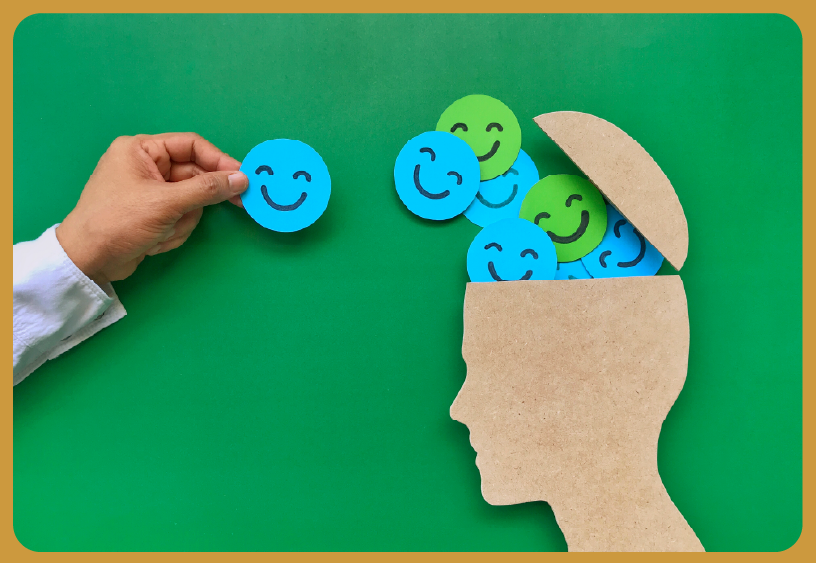
What we repeat becomes our habit, and our habits make us. It is imperative to pay attention to the patterns we fall into because they have the power to shape our lives. In the mentally stimulating environment we live in right now, the relevance of tools and techniques that help us master our behavior is quite important. Cognitive Behavioral Therapy focuses on exactly this. Want to know how? Keep reading!
What Exactly Is Cognitive Behavioral Therapy?
Cognitive behavioral therapy (CBT) is a science-based treatment that addresses distorted thought processes and illogical beliefs. People comprehend events using mental models based on their history. For cognitive restructuring, rational analysis and real-world evidence are utilized to examine problematic thinking to transform feelings.
CBT, like behaviorism, also emphasizes visible behaviors and how the environment affects behavior. Successful CBT therapies modify brain activity, according to neuroscience. Functional neuroimaging shows alterations in prefrontal cortex activity, amygdala responsiveness, and emotional brain connections. These findings demonstrate that cognitive behavioral treatment (CBT) alters brain circuits relevant to thinking, emotion, and action.
Cognitive Behavioral Therapy Techniques

We all know how complex of a machine the human brain is. There are thought patterns that form groves and ridges in our brains, which sometimes leads to an inability to break bad habits. But CBT has an arsenal of tools that help you rewire the mechanism of your brain.
1. Journaling
Keeping a journal is more than just simply writing down thoughts. It's a way to deal with stress and emotions. From a psychological point of view, it helps people think about themselves by giving them an organized way to explore their feelings and thoughts. It encourages self-reflection and self-awareness, aiding in recognizing repetitive negative or irrational beliefs, and reshaping them through cognitive restructuring. According to research, writing about how you feel can improve your mental health by assisting you understand and make sense of your experiences. Also, writing down your ideas may use brain processes that help you control your emotions, which may add to its therapeutic value.
2. Behaviour Activation
Behavioural Activation focuses on increasing engagement in activities that are meaningful and rewarding. It operates on the principle that a person's mood is closely tied to their behaviors, and by targeting and altering behaviors, one can effectively improve their emotional state. Activity scheduling is a behavioral activation strategy for planning and scheduling enjoyable activities. Real-life studies suggest that planning activities reduces sad symptoms and improves emotions via changing behavior. Doing something you like activates pleasure and feedback centers in your brain.
3. Mood Thermometer
A mood thermometer shows how powerful your feelings are. It helps you manage and discuss emotions. Psychologically, it aligns with emotional awareness and control. People can better understand their emotions by rating and naming their feelings. Emotion theory supports this strategy since identifying and acknowledging feelings improves emotional wellness. Neuroscience shows that identifying and acknowledging sensations activates emotional and self-awareness centers in the brain.
4. Cognitive Restructuring
Recognizing and challenging negative thinking patterns is crucial to cognitive-behavioral treatment. According to the cognitive model of psychology, our thoughts impact our feelings. It is well established in cognitive bias literature that individuals think skewedly. Science originates here. Cognitive restructuring helps people reconsider and reframe their thinking, leading to more balanced and realistic thinking.and changing their mood. This process affects brain networks that govern thought and sensation.
5. Systematic Exposure
Depressed and anxious individuals often engage in avoidance, a coping strategy. They may feel hopeless about engaging in certain activities. Avoidances are safety behaviors that one believes will ward off anxiety. While avoidance tends to bring immediate relief (and so is quite reinforcing), it perpetuates the problem. This strategy gently exposes individuals to their fears in a controlled way, helping them understand that things often don't unfold as they expect. This process changes how the brain responds to fear, reducing anxiety over time. Systematic exposure is used to treat many anxiety patients and alter unhelpful fear connections.
6. Graded Task Assignments
Based on the ideas of operant training, this method includes rewarding behaviors that are small steps toward a bigger goal. From a psychological point of view, it fits with how behavior is shaped, where complicated actions are broken down into smaller, easier-to-handle parts. This method is based on the idea that rewarding small steps forward can help people learn more complicated habits over time. There is proof that successive approximation works in a number of behavior change treatments, such as those that help people with worry, phobias, and learning new skills.
CBT also incorporates various other cognitive and behavioral techniques like problem-solving, decision-making, refocusing, relaxation, role-playing, “Pie" Technique, and creating credit lists to enhance coping strategies and reshape thought patterns.

Benefits of Cognitive Behavioral Therapy
We are used to a pattern of thinking that we reinforce with every habit. CBT helps us rewrite this pattern and reap benefits from the same.

Gain Control Over One’s Thinking Pattern
Uncontrollable thoughts are common with anxiety. Worriers struggle to manage their negative thoughts, but everyone does. Unwanted thoughts and concerns often interact. To reduce concern, you must control racing thoughts and mental distortions. Cognitive behavioral therapy helps here. CBT helps worry-prone people think more clearly, making it simpler to manage their thinking issues. They can recognize erroneous thinking and address it to reduce anxiety and depressive symptoms.
Helps With Stress Management
Chronic stress damages mental health and causes sadness. Stress and depression can aggravate each other. Chronic stress disrupts mental balance. Fortunately, cognitive behavioral therapy is incredibly beneficial for managing stress. It works by increasing rationalizing thinking. CBT provides long-term skills to manage stress effectively by equipping the individual with effective coping mechanisms and problem-solving skills to handle stressful situations
Increases Self-Confidence
Having low self-esteem or confidence can make someone more likely to become addicted and put their healing at risk. Cognitive behavioral therapy helps people build their confidence by showing them how their thoughts, feelings, and actions are connected. CBT says that how we are is not based on what we experience but on how we understand things. Cognitive behavioral therapy (CBT) teaches people to make decisions based on reasoning and reason instead of reacting negatively or irrationally to certain situations or stimuli. This makes them feel more confident.
And That's A Wrap!

If you have tried every trick in the book to master your thought patterns but could not succeed, do give CBT a try. The techniques and benefits of CBT are backed by years of research, making it an excellent contender. Zivanza is just a call away, where you can talk to our expert psychologists about your concerns in a professional environment.
- Share














